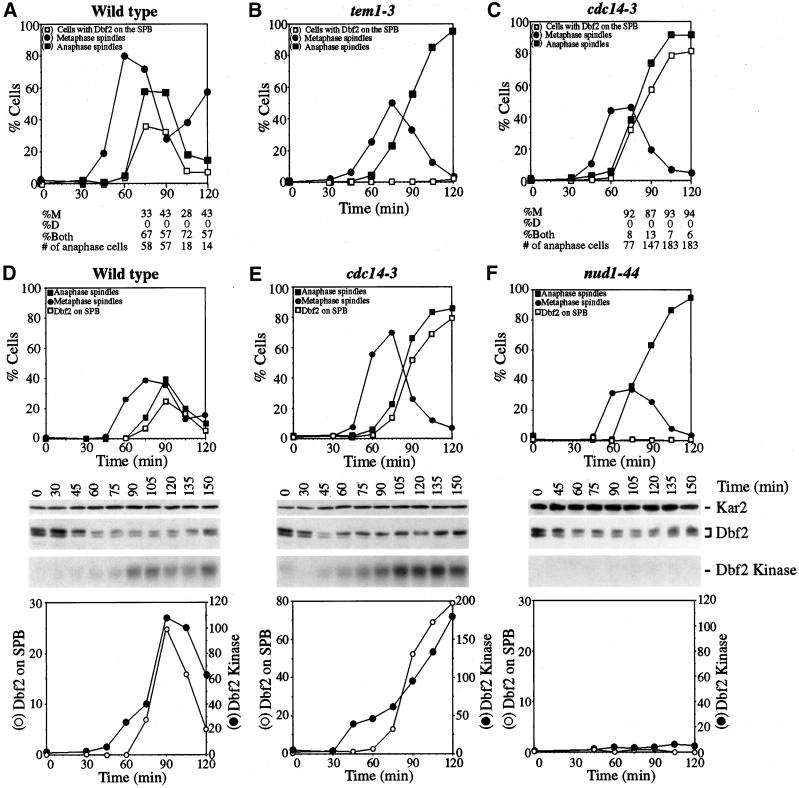Figure 7.
Dbf2 localization and kinase activity in tem1–3 and cdc14–3 mutants. (A-C) DBF2-MYC (A1931), tem1–3 DBF2-MYC (A2135) and cdc14–3 DBF2-MYC (A2179) cells were arrested in G1 with the use of 10 μg/ml (A-C) or 5 μg/ml (D-F) α-factor at 23°C in YEP medium containing glucose (YEPD). When the arrest was complete (after 2 h (D-F)) and a mating projection could be seen (after 3 h (A-C)), cells were released at the restrictive temperature (37°C) in YEPD. (A) Percentage of cells in metaphase (closed circles), anaphase (closed squares) and with Dbf2-Myc protein localized either on 1 or on both SPBs (open squares). The numbers underneath the graph represent the percentage of anaphase/telophase cells with the Dbf2-Myc protein on the SPB in the mother cell (%M), in the daughter cell (%D) or on both SPBs (%Both). “# of anaphase cells” indicates the number of anaphase/telophase cells analyzed. (B) Percentage of tem1–3 DBF2-MYC cells in metaphase (closed circles), anaphase (closed squares), and Dbf2-Myc protein localized either on 1 or both SPBs (open squares). (C) Percentage of cdc14–3 DBF2-MYC cells in metaphase (closed circles), anaphase (closed squares) and with Dbf2-Myc protein localized either on 1 or both SPBs (open squares). The numbers representing various types of Dbf2-Myc localization underneath the graph are as in (A). (D - F) Wild-type (A1931, D), cdc14–3 (A2179, E), and nud1–44 mutants (A2339, F), all carrying a DBF2-MYC fusion, were arrested in G1 with α-factor (5 μg/ml) followed by release into medium lacking pheromone. The graph at the top of each panel shows the percentage of cells with metaphase spindles (closed circles), with anaphase spindles (closed squares) and Dbf2 on SPBs (open squares). Dbf2-Myc protein levels and Dbf2 kinase activity are shown in the middle of each panel. The graphs at the bottom of each panel show a comparison between SPB localization of Dbf2 (open squares) and Dbf2 kinase/Dbf2 protein (closed squares).

